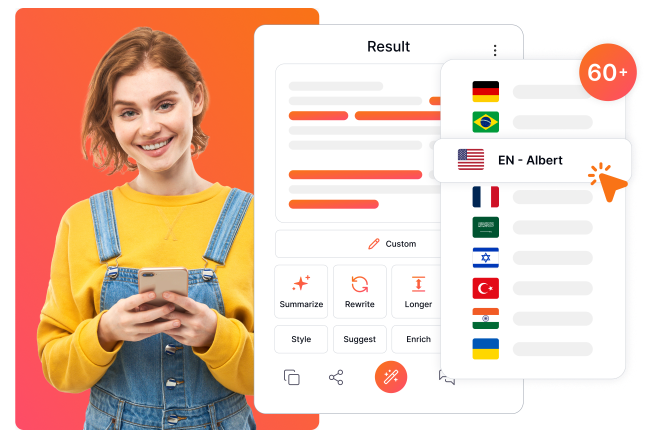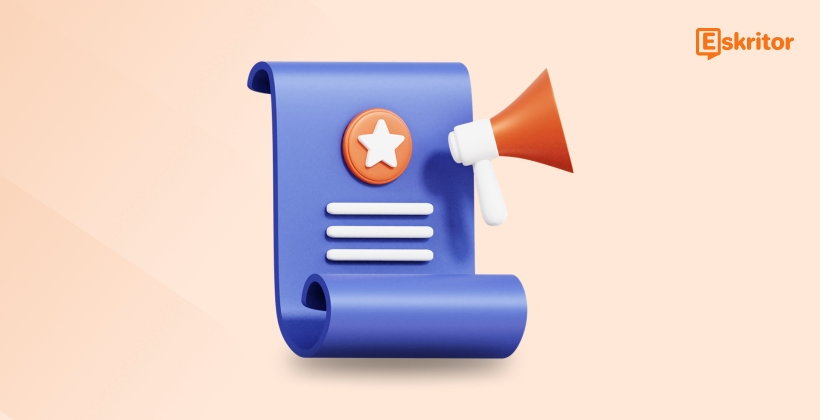Top AI Writing Tools to Boost Productivity
Top AI Writing Tools to Boost Productivity
Blog Article
AI Writing Tools vs. Human Writers – A Comparative Analysis
Synthetic intelligence (AI) writing technology has evolved quickly in the last decade, reshaping the way in which we develop and talk with written content. From syntax modification methods to AI-generated novels, the options appear limitless. But wherever precisely is that technology going? Let's examine the improvements, problems, and possible future of AI Editing.

How AI Publishing Technology Performs Nowadays
At their primary, AI writing technology depends on Normal Language Handling (NLP) and machine learning. These technologies allow versions to know, create, and increase human language. Methods available today master projects like:
1. Material Generation
AI has reached a spot where it could produce complete blog posts, social media sayings, and also media articles. Some versions are designed for mimicking human publishing types so effortlessly that distinguishing between AI- and human-written content has become significantly difficult.
2. Grammar and Fashion Idea
AI-powered publishing personnel don't only check for syntax and spelling problems; they also provide ideas to enhance tone, clarity, and sentence structure, creating complex publishing accessible to a wide audience.
3. Message Examination
AI may consider the mental tone of a piece, enabling companies to assess how their communications will resonate with readers. This is specially helpful in advertising and client interaction.
The Current Trends in AI Writing Technology
A few styles are surrounding the following period of AI-powered publishing methods:
• Personalization
AI publishing engineering is significantly capable of tailoring content to individual preferences. Versions can adapt to a user's writing style, ensuring the production thinks authentic.
• Multilingual Functions
Many AI instruments are growing their international achieve by offering increased translation features and support for numerous languages.
• Increased Research Characteristics
AI tools now get the ability to analyze vast amounts of data and provide fact-checked, well-researched publishing in moments, simplifying the method for professionals in industries like law, finance, and journalism.
What the Future Keeps for AI Publishing Engineering
1. Increased Creativity
While current AI is proficient at generating content, their imagination continues to be limited by patterns within their education data. Future AI is not only expected to assist but to generate unique, topical operates that challenge individual imagination.
2. Seamless Effort
Envision an AI that works alongside you in real-time, finishing your phrases, doing live edits, and actually brainstorming ideas. AI publishing resources may soon become co-authors, enabling imagination to flow uninterrupted.
3. Honest and Available Style
With rising concern about plagiarism, misinformation, and bias, developers work toward more transparent AI training procedures and honest implementation. Potential tools will more than likely provide more comprehensive citations and steps to ensure accountability.
Challenges and Concerns
The development of AI writing engineering isn't without hurdles, including:
• Honest Issues

Who owns content created by AI? Just how can we assure AI-generated material isn't scattering misinformation? These debates stay unresolved.
• Human-AI Harmony
Can AI match human creativity or completely replace certain tasks? Several authors and artists be worried about their relevance within an AI-driven world.
• Accessibility Divide
Not totally all agencies or regions have equal use of cutting-edge AI instruments, raising questions about the affect with this engineering on global inequality.
Changing the Way We Write
AI writing technology remains in their infancy compared to their potential. Whether you're a student developing essays, a content marketer targeting certain readers, or a author seeking enthusiasm, AI tools will continue to revolutionize the publishing process. The next decade claims breakthroughs that blend individual ingenuity with equipment intelligence, creating a future wherever writing is better, accessible, and impactful than ever before.
Report this page